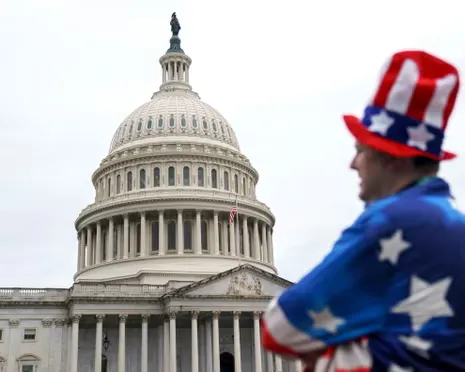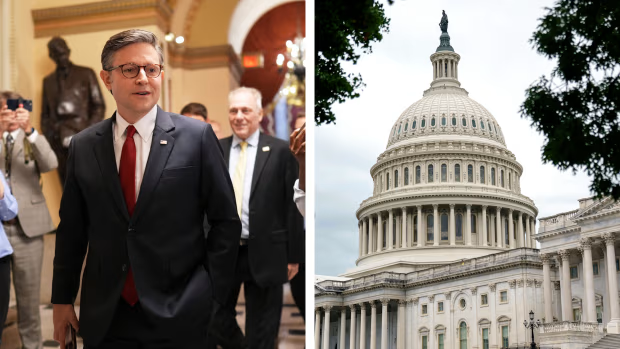
US House votes on “megabill” rule
US House Votes on “Megabill” Rule A Defining Moment for Legislative Strategy and Party Unity
In a pivotal and high stakes development on Capitol Hill, the U.S. House of Representatives recently voted on the procedural rule to advance what has been dubbed a "megabill" a sweeping legislative package encompassing critical provisions on defense funding, border security, veterans' services, and international aid. This vote, while technically not an approval of the bill itself, has become a defining test of both party leadership and internal unity, particularly within the Republican majority. The outcome of this rule vote, which determines how and if the bill will be debated on the floor, has sent ripples through the political landscape, offering insight into the ideological divides shaping the 118th Congress.
At its core, a rule vote sets the terms for how a bill is debated how long the debate will last, what amendments can be considered, and the structure of the final decision. While such votes are often routine when the majority party is unified, this one proved to be anything but. Several conservative Republicans, critical of what they perceive as excessive spending and policy concessions, threatened to derail the rule vote, placing House Speaker and party leadership in a precarious position. The narrow margin of control held by Republicans meant that even a handful of defections could doom the rule, blocking the megabill from even reaching the floor for debate.
The megabill itself is a complex and far reaching piece of legislation. It bundles multiple high priority issues into a single package, a strategy often employed to expedite the legislative process and force compromise. Included in the bill are appropriations for defense and military salaries, enhancements to border infrastructure, funding for veterans' medical services, and emergency aid for key international allies, including Ukraine and Taiwan. This bundling approach is controversial critics argue it limits transparency and forces lawmakers to accept provisions they may oppose in exchange for those they support. Proponents, however, see it as a necessary means of overcoming legislative gridlock in a polarized Congress.
The rule vote highlighted the growing tension between establishment Republicans and the party's hard right flank. Members of the House Freedom Caucus and other fiscal conservatives expressed deep concerns over what they described as unchecked spending, insufficient accountability for foreign aid, and inadequate progress on immigration enforcement. Their resistance to the rule was not just a protest against specific provisions but a broader statement against the leadership’s strategic approach. In response, moderates and defense focused members emphasized the urgency of passing the bill, especially in light of looming funding deadlines and escalating global threats.
To shore up support, House leadership engaged in intense last minute negotiations, offering side deals, promises of future votes, and procedural concessions. Speaker allies worked behind closed doors to reassure dissenters that their priorities would be addressed in subsequent legislation or through administrative actions. Several lawmakers were reportedly swayed by these efforts, highlighting the transactional nature of congressional politics. Others, however, remained unmoved, signaling a deep and perhaps irreconcilable ideological rift within the majority party. In a particularly symbolic moment, some dissenting members crossed party lines to vote against the rule alongside Democrats, underscoring the fragile coalition holding the chamber together.
Democrats, for their part, approached the rule vote with strategic caution. While many opposed the megabill's content particularly provisions they viewed as restrictive on immigration or too hawkish on foreign policy they largely refrained from intervening in the internal GOP dispute. Democratic leadership maintained that the onus was on Republicans to govern and manage their own internal divisions. At the same time, some moderate Democrats hinted at a willingness to support the underlying bill if key provisions, such as Ukraine aid or veterans’ health funding, were preserved. Their calculus was clear avoid bailing out a fractured majority on procedural grounds, but remain open to influencing the final legislation.
The ultimate passage or failure of the rule vote carries significant implications. If the rule fails, the bill is effectively dead in its current form, forcing leadership to either rework the package or abandon it altogether. This could delay critical funding and disrupt government operations, especially in areas like military readiness and border enforcement. A successful rule vote, on the other hand, clears the way for floor debate and potential passage, though it does not guarantee the bill’s success in the Senate, where bipartisan cooperation remains essential. Either outcome will reverberate throughout Washington, shaping budget negotiations, foreign policy commitments, and the broader legislative calendar.
Beyond its immediate impact, the vote on the megabill rule serves as a barometer of congressional functionality and party cohesion. It highlights the growing difficulty of managing a slim and ideologically diverse majority, where even routine procedural votes can become flashpoints. It also reflects the strategic challenges facing Speaker leadership balancing competing demands within their caucus, maintaining legislative momentum, and demonstrating governance amid constant political pressure. For the public, it serves as a reminder of how deeply divided the legislative branch remains, and how those divisions can influence everything from national security to international alliances.
In conclusion, the U.S. House vote on the megabill rule has become more than a procedural step it is a litmus test for political leadership, legislative strategy, and the resilience of the American democratic process. As Congress grapples with increasingly complex and urgent challenges, the ability to navigate internal divisions and achieve consensus becomes ever more critical. if this megabill ultimately passes or falls apart, the rule vote has already left a mark, signaling the difficult road ahead in governing a divided nation. As lawmakers return to their districts or prepare for reelection, the consequences of this moment will resonate far beyond the walls of the Capitol.











